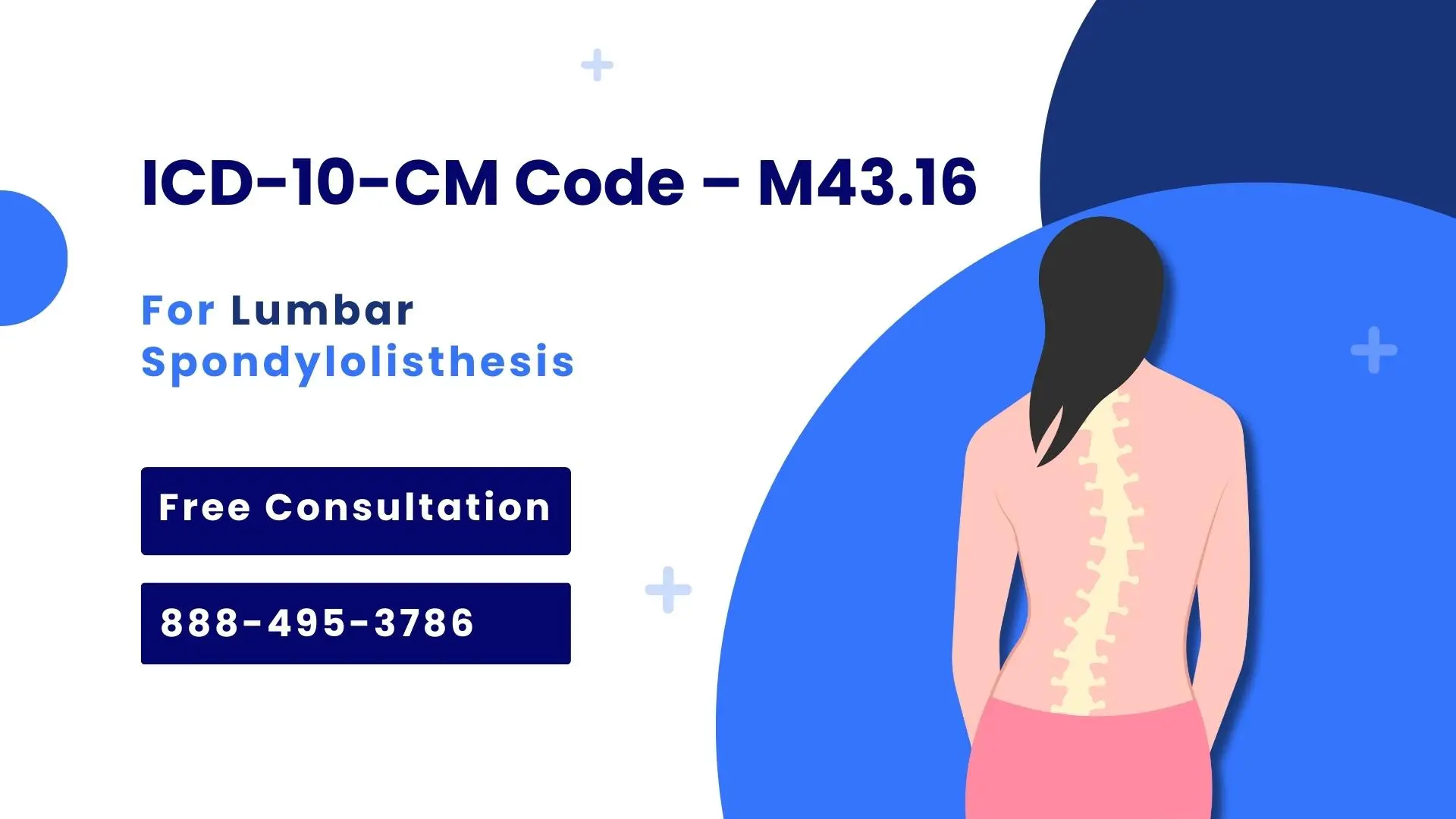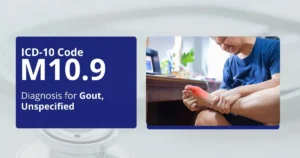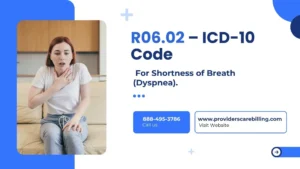If someone experiences back pain, it may be due to a condition that often shows up in scans and reports – LS (Lumbar Spondylolisthesis). This term sounds complicated to many people. This disease occurs when one of the bones in your lower back has slipped out of place.
It can cause pain and nerve issues in the body. All professional doctors and insurance companies use a specific medical code, called ICD-10-CM. This specific code is used for this medical condition. They can record and track diagnoses using this code.
In this article, we’ll explain lumbar spondylolisthesis and the ICD-10-CM code M43.16. We’ll discuss how it relates to terms like anterolisthesis and retrolisthesis, and examine how this condition is diagnosed.
Let’s First Understand the Condition Lumbar Spondylolisthesis
This term, spondylolisthesis, means that a spinal vertebra has slipped forward or backward in the lower body. When this symptom occurs in the lower back, or lumbar spine, it’s called lumbar spondylolisthesis. There are different kinds of spondylolisthesis terms. The most common ones include:
- Anterolisthesis – the vertebra slips forward
- Retrolisthesis – the vertebra slips backward in the body
Both types can press on nerves and cause lower back pain. And the most common issues that it can cause include leg pain, tingling, or weakness. There are some people who feel fine, but others may struggle with daily activities such as walking, bending, or lifting.,
What does M43.16 stand for?
This code describes lumbar spondylolisthesis.
- M43 represents issues with the spine.
- .16 indicates that it is in the lower back.
Doctors use this code to indicate that you have a back problem on insurance forms and reports. The code M43.16 on your report shows the doctor has diagnosed you with spondylolisthesis in your lower back.
What Are the other ICD-10 Codes for Spondylolisthesis?
There are various ICD-10 codes for spondylolisthesis. Here are some typical ones:
- M43.10: Unspecified site of spondylolisthesis
- M43.12: Around the neck (cervical spine)
- M43.14: In the middle or upper back (thoracic spine)
- M43.16: The lumbar spine, or lower back
M43.16 is the most used code among all of these. Physicians still use M43.16 for both slips if the issue is with the lumbar spine.
Why the Correct ICD-10 Code Matters?
Documentation is not the only benefit of using the correct ICD-10 code for lumbar spondylolisthesis. Additionally, it impacts:
- Medical billing: In order to approve coverage, insurance companies require the correct code.
- Treatment planning: Physicians can select the best care when they have an accurate diagnosis.
- The health data tracking aids researchers and clinics in keeping an eye on patterns and results.
If the incorrect code is used, then the claim could be rejected. This may negatively impact the patient’s ability to receive the care. They end up with additional paperwork for healthcare and professionals. Accuracy with codes like M43.16 is crucial in the healthcare industry.
Symptoms of Lumbar Spondylolisthesis
There are many patients with lumbar spondylolisthesis who may experience a variety of symptoms in this condition. The typical ones include:
- Pain in the lower back and stiffness in the muscles
- Leg pain or numbness
- Difficulty walking or standing for extended periods of time
- A “tilted” stance
The spinal nerves may be pinched by the slipped vertebra in severe situations. It results in extreme pain or loss of bladder control.
Reasons for Spondylolisthesis in the Lumbar Spine
There are many causes of lumbar spondylolisthesis:
- Age-related wear and tear – It is common in older adults
- Stress fractures – They are especially common in athletes or active individuals.
- Birth defects – In this case, some are born with spinal issues that later lead to slippage.e
- Injury or trauma – In this situation, a fall or accident can trigger it
- Arthritis – It causes joint weakness and instability in the spine.
It does not matter the cause. The early diagnosis and proper treatment can help manage pain and prevent it from getting worse.
Patients with chronic lumbar spondylolisthesis may also experience widespread musculoskeletal pain, which could indicate a coexisting condition like fibromyalgia (ICD-10 code M79.7). Accurate coding is essential for proper treatment planning and reimbursement.
Diagnosis and Imaging
Doctors may do these to confirm a case of spondylolisthesis:
- They do a physical exam
- Check the patient’s symptoms and medical history.
- Do their imaging tests like X-rays, MRI, or CT scans
Through these tests, they need to know about the basic situation. These tests indicate the degree to which the vertebra has slipped and moved. Doctors determine the severity of the case for the patient based on the reports. Again, once diagnosed, the condition is usually recorded under the code ICD-10, M43.16 for lumbar spondylolisthesis in the medical record.
Treatment Options
The treatment depends on the patient’s condition. Doctors need to know the severity of the slippage and the level of pain the patient is experiencing. The common treatments include:
1. Non-Surgical Options
- Rest and avoid heavy lifting in this situation
- Do physical therapy
- Pain medications help
- Bracing for back support also does wonders.
Many people with mild cases can recover with these treatments alone.
2. Surgical Options
If pain is long-lasting and the patient’s spine is very unstable, surgery might be the first option. The surgeons may perform:
- Spinal fusion – It joins two or more bones to stop movement
- Decompression surgery – It removes the pressure on the nerves of the patient
Physical therapy also helps patients regain their strength after the surgery.
Medical Coding for Sl
The ICD-10 codes that are relevant to the spondylolisthesis term:
| Conditions | ICD-10 Code |
| Spondylolisthesis is unspecified | M43.10 |
| CS (cervical spondylolisthesis) | M43.12 |
| TS (thoracic spondylolisthesis) | M43.14 |
| LS (lumbar spondylolisthesis) | M43.16 |
Conclusions
Living with lumbar spondylolisthesis is not easy at all. You have to understand the condition first. The information can make a big difference in your treatment. Having the basic knowledge about medical coding is necessary.
It does not matter whether you are a patient or a healthcare worker; you should be aware of the M43.16 terms and conditions. It is also crucial to recognize the related terms, such as anterolisthesis and retrolisthesis. They sound different than others. They often point to the same condition in slightly different ways.
Need Help with Medical Coding or Billing?
If you are a healthcare provider and are looking for reliable medical coding, then you are not alone in this. Getting ICD-10 codes right, like M43.16 for lumbar spondylolisthesis, is just the beginning point for anyone. The accurate coding matters whether it is for clean claims or faster reimbursements. Contact Providers Care Billing LLC professionals now; we are here to ensure your work is made easier, quicker, and more accurate.




